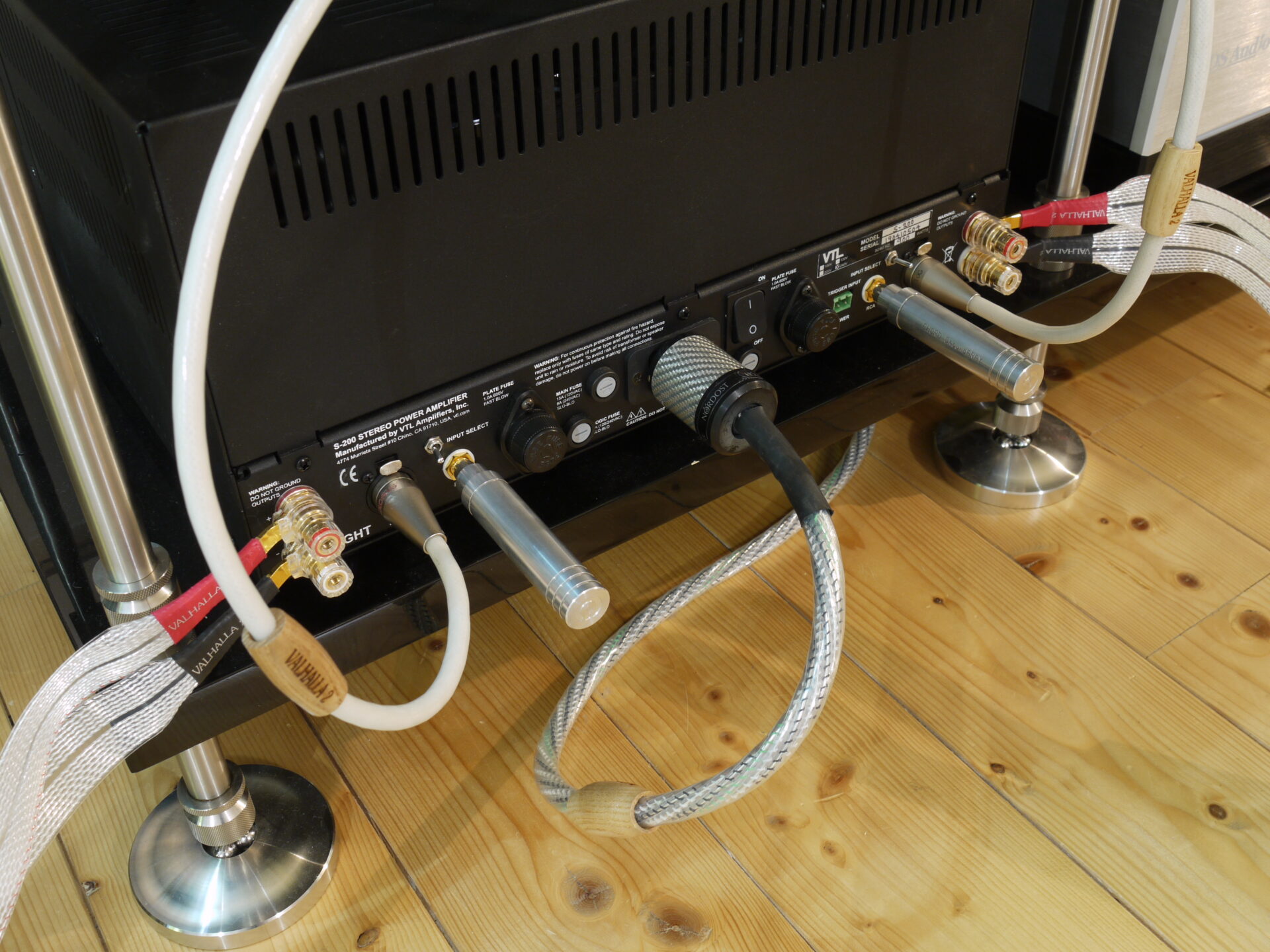Because each GroundARAY is built onto its own specific connector, you need to decide where you are going to stick it before choosing which one you need – not so difficult if you are talking analogue componentry but more challenging when it comes to digital. And there’s the rub, because experience shows that digital is exactly where you want to start. With so many permutations possible, let’s take a look at applying GroundARAYs in a specific system context – in this case the current Reading Room rig. Leaving aside the turntable, that consists of a CEC TL-2N transport, Wadax Pre1 Ultimate DAC and VTL TL-5.5/S200 driving Wilson Sasha DAWs – plenty of boxes that include most of the critical product categories. I also assembled a gaggle of six GroundARAYs, sporting RCA, male and female XLRs and an RJ45.

Starting out with just a single GroundARAY, I juggled the options between sticking it to the transport or the DAC. Either way, I got a significant increase in transparency and focus, a reduction in grain and a much more developed soundstage – along with more natural pacing and control of tempo. Playing the stately opening of the second movement on Kleiber’s live Beethoven 7thSymphony (Orfeo C 700 051B) the GroundARAY increased the sense of presence and brooding, measured pace, making the shifts in level more explicit, the building momentum and density more effective. But whereas putting the GroundARAY in the AES/EBU input on the DAC delivered more air, transparency and a lighter overall balance, using the AES/EBU output on the transport produced a fuller, richer, weightier sound, with more presence and substance. The texture of the double basses was more developed and natural, as was the sense of the music (and performance) ‘breathing’. At the end of the day, you pays your money and makes your choice – I’d go with the transport first – but it underlines the need to experiment while I also suspect that results will differ with different equipment and systems. Of course, putting GroundARAYs in both locations delivered the best of both worlds and that also underlines the cumulative nature of their musical impact.
With the digital source sorted, moving onto the analogue components produced another range of options, with a choice of pre-amp outputs or inputs to either the pre-amp or power amp available. Listening first with a single GroundARAY, it soon became obvious that in these dual mono components, using a pair of GroundARAYs (one for each channel) delivered much more than twice the benefit, irrespective of location. I also preferred using the pre-amp’s parallel outputs rather than any of its unused inputs. They presented a greater sense of transparency and dimensionality, spread and spatial coherence. But the best results of all in this system, were achieved using the parallel inputs on the power amp, a set up that delivered greater stability, presence and dimensionality, a more developed overall acoustic space and greater poise and precision in the playing.
Mixing and matching…
With four GroundARAYs in use, the system was really starting to sing, bringing the musicians well and truly into the same space, including the listener in the same event. Do four GroundARAYs trump a single GC1? With the CAD unit connected to the ground post on the DAC, we’re back into the world of equal but different. The GroundARAYs deliver slightly better transparency, clarity and detail, the GC1 a more planted overall picture with slightly greater musical and temporal coherence. But here again, use the two together and the cumulative benefits are greater than the sum of the parts. Of course, every time you add another GroundARAY to your system you are eroding its principle advantage over the competition – it’s price. So, are four GroundARAYs better than a CAD GC1? It’s an interesting question but I’d suggest, largely academic. The great thing about the GroundARAY is its versatility. If you don’t have or don’t want to spend around £2K on improving your system’s grounding, this product reduces your commitment, or at least reduces it to bite-sized chunks. If you are prepared to go the whole hog then the GroundARAY does that too – if you use enough of them or, perhaps even more interestingly, combine them with other, larger capacity, centralized systems, like the Nordost QKore, CAD GC3 or GCR. Running four GroundARAYs in the test system was seriously impressive. Running four GroundARAYs AND a GC1 hooked up to the DAC’s ground post was considerably better still. Running the RJ45 GroundARAY inserted into the SOtM network switch that feeds my dedicated audio LAN, in conjunction with a fully QKored main system delivered a shocking improvement on streamed music. That ability to target specific noise sources, over and above a more general approach is the GroundARAY’s trump card, making it just as applicable to people who already own an enhanced grounding solution as to those who fancy investigating the opportunity.

